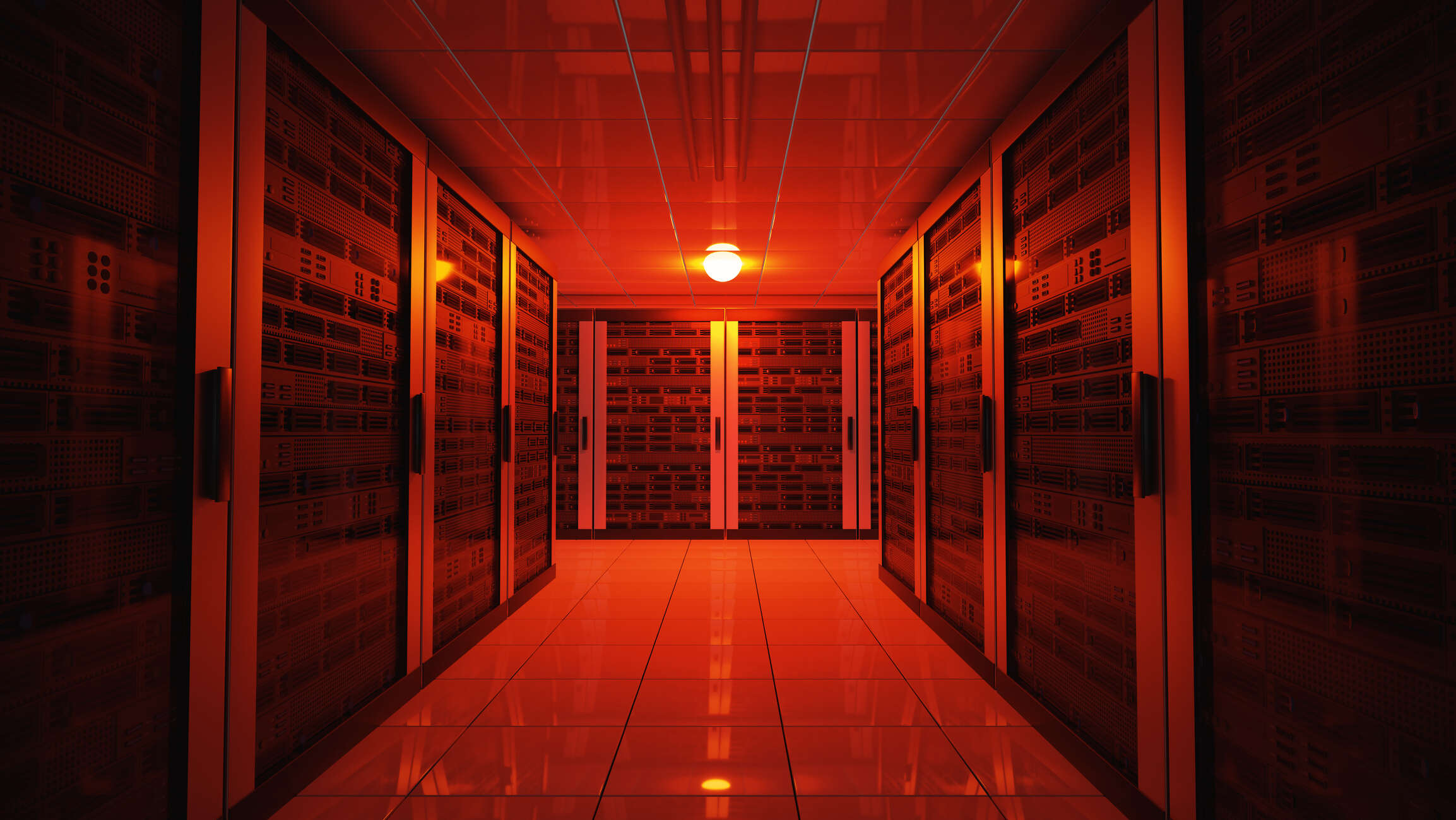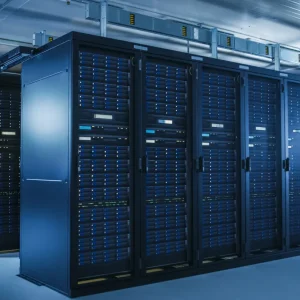
Data centres are where ICT meets the environment. And while data centre operators have made progress in increasing their efficiency, growing demand for IT services and increased awareness of the need to tackle the emissions embedded in digital infrastructure means there is much work to be done. At the recent Making Sense of Net Zero virtual forum, Tech Monitor convened data centre experts and practitioners to discuss the task at hand, the frontiers of innovation, and what support is needed to help reduce the environmental burden of data centres.
Register to view this and other full sessions from Making Sense Of Net Zero.
What is the role of data centres in the Net Zero agenda?
Energy efficiency is already high on the agenda for data centre operators. “We’ve been working on a fairly comprehensive sustainability strategy as part of our CSR initiatives for the last ten years or so,” said panellist Steve Watt, chief information officer at the University of St Andrews. “In the datacentre space, we’ve been looking at how we could make that more efficient by driving down our [data centre] energy usage from somewhere in the order of 33% of the overall power consumption down to 20%.”
But does the sector as whole recognise its responsibility to drive decarbonisation? “My response is absolutely positively a yes,” said Susanna Kass, chief sustainability officer at InfraPrime, a renewable energy provider for data centres. This is evidenced by the Climate Neutral Data Centre Pact, an agreement by the data centre sector to cut emissions. “In terms of building data centres, many of them actually have made a carbon neutral or carbon negative pledge.”
Max Schulze, executive chairman at Sustainable Digital Infrastructure Alliance, believes the sector has yet to reckon with the potential impact of exponential growth in the digital economy. “I think we need to be a lot more aware and a lot more action-oriented.”
How can organisations achieve Net Zero emissions from their data centres?
Watt described the lengths that the University of St Andrews is taking to power its data centre facilities with renewable energy.
The world’s most efficient data centres are found in the Nordics, where renewable energy is abundant and cooling is free. Not everyone can locate their data centre in a Nordic country, but they can consider how their workloads might be optimised to make use of the most efficient computing resources, said Schulze. “Doing payroll once a month in a company is usually a very computing-intensive task, especially if you have a company of 100,000 employees and it can take weeks of computation. But it doesn’t really need to be in the office. That could be running in the Nordics.”
Kass agreed, arguing that computing workloads need to be timed and optimised to make maximum use of renewable energy. “We need to work on the … trade-off in terms of doing the compute. Do you really need to do a maintenance update right now? The answer is no.”
How can the embedded emissions in data centre facilities be addressed?
Understanding the emissions embedded in equipment and infrastructure is vital for managing the environmental impact of data centres. On this front, Schulze argued, the industry is not yet as transparent as it should be. “A cloud is [said to be] green when it procures 100% green electricity, which is factually not true. You have to look at also the embedded carbon of the hardware, the diesel generators, the batteries and the infrastructure itself.”
Kass countered that data centre operators are beginning to demand transparency over embedded emissions from their suppliers. “You have big guys… saying ‘I will not do business with you anymore unless you’re going to tell me what is the embodied carbon of the material that I’ll be sourcing from [you]’. It’s a behavioural change and it’s actually moving in the right direction.”
Reducing embedded emissions also requires extending the life of ICT infrastructure as long as possible. Watt explained that this requires constant optimisation of data centre facilities. “There needs to be an ongoing process of honing that facility, looking at efficiency, looking at the metrics and acting on what these metrics are telling you, and sweating assets as long as you possibly can.”
The role of IT consumers in enabling net zero data centres
The consumers of IT services also have a role to play in maximising the efficiency of data centres. Software developers in particular have a responsibility to make sure they are not designing their systems in ways that propagate inefficient energy use, argued Schulze.
He explained: “I think there’s also a responsibility to stop… leaving legacy applications laying around and not upgrading them or migrating them. That has always been a hard conversation because developers want to do that, but CEOs don’t want to pay for that, which is called technical debt. And we need to address this and either get rid of the legacy applications or modernise them.
“And the third element, I think, is that the developers are responsible, in my opinion, to educate data centres on how software is and has been changing. So if you look at virtualisation or if you look at load balancing no software developer relies on a physical facility being available that has all that has long been out designed, and the cloud is just the best paradigm of all of that. The software developers need to educate data… so that no we don’t need diesel generators. No, we don’t need so much back-up anymore. You can stop with building it like this and we need to educate.”
The need for leadership
While optimistic that the data centre industry is moving in the right direction, Kass called for stronger leadership from policymakers – and a commitment to meaningful action from data centre operators. The practice of carbon offsetting, she said, is not a valid strategy.
Register to view this and other full sessions from Making Sense Of Net Zero.






